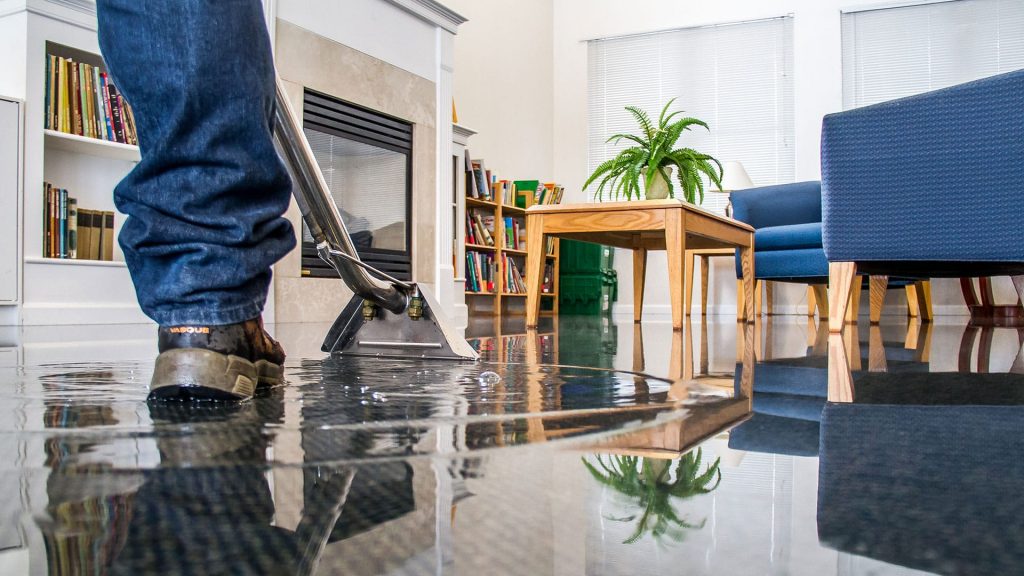Water and mold damage can wreak havoc on your property, leading to extensive and costly repairs if not addressed promptly and effectively. Understanding the risks, knowing what steps to take, and recognizing the importance of professional intervention are crucial to restoring your home or business to its former glory. For comprehensive guidance and expert assistance, companies such as the inspectors company can be invaluable resources in navigating the complexities of water and mold damage restoration. In this article, we will explore the essential steps for effective restoration, ensuring you have the knowledge to act swiftly and decisively.
Understanding the Impact of Water and Mold Damage
Water and mold damage can have far-reaching consequences beyond what meets the eye. The initial signs may seem minor—a small leak, a damp spot, or a musty odor—but these issues can quickly escalate into serious problems.
The Hidden Dangers
Water intrusion can weaken the structural integrity of your property, leading to rot, warping, and even collapse in extreme cases. Additionally, mold growth, which thrives in damp environments, poses significant health risks, particularly for those with respiratory conditions or weakened immune systems. The spores released by mold can cause allergic reactions, asthma attacks, and other respiratory issues, making it vital to address mold problems as soon as they arise. For expert assistance in handling water and mold damage, visit https://www.riskfreeserv.com website to ensure your property and health are protected.
Water intrusion can weaken the structural integrity of your property, leading to rot, warping, and even collapse in extreme cases. Additionally, mold growth, which thrives in damp environments, poses significant health risks, particularly for those with respiratory conditions or weakened immune systems. The spores released by mold can cause allergic reactions, asthma attacks, and other respiratory issues, making it vital to address mold problems as soon as they arise. For expert assistance in handling water and mold damage, visit https://www.riskfreeserv.com website to ensure your property and health are protected.
Did You Know?
Mold can begin to grow in as little as 24 to 48 hours after water damage occurs. This rapid growth underscores the importance of acting quickly to prevent further contamination and damage to your property.
Mold can begin to grow in as little as 24 to 48 hours after water damage occurs. This rapid growth underscores the importance of acting quickly to prevent further contamination and damage to your property.
Immediate Actions to Take After Water Damage
Discovering water damage in your home or business can be overwhelming, but taking immediate action is crucial to minimizing further harm and preventing the onset of mold growth.
Stop the Source of Water
If possible, locate and stop the source of the water intrusion. This might involve shutting off the main water supply, fixing a leaking pipe, or addressing roof damage. Preventing additional water from entering your property is the first step in controlling the situation.
Remove Excess Water
Use mops, towels, or a wet/dry vacuum to remove as much standing water as possible. Quick water removal can help prevent the spread of moisture and reduce the risk of mold growth.
Dry the Affected Area
Use fans, dehumidifiers, and open windows to promote air circulation and expedite the drying process. Drying out the area quickly is essential in preventing mold from taking hold.
Protect Your Belongings
Move furniture, rugs, and personal items to a dry area to prevent them from becoming further damaged. If items are already wet, dry them thoroughly to avoid mold growth.
Document the Damage
Take photographs and make notes of the damage for insurance purposes. Proper documentation can streamline the claims process and ensure you receive the compensation you’re entitled to.
The Importance of Professional Water Damage Inspection
While it may be tempting to handle water damage cleanup on your own, a thorough inspection by a qualified professional is vital to assess the extent of the damage and create an effective restoration plan.
Why Professional Inspection Matters
A professional water damage inspector has the expertise and equipment to detect hidden damage that may not be visible to the untrained eye. This includes checking for moisture behind walls, under flooring, and in other hard-to-reach areas. An accurate assessment is essential for determining the full scope of the damage and identifying potential mold growth.
Creating a Restoration Plan
Once the inspection is complete, the professional will develop a tailored restoration plan that outlines the steps needed to restore your property. This plan will address not only visible damage but also any underlying issues that could lead to future problems.
Did You Know?
Even after the visible water is removed, moisture can remain trapped in building materials, creating an ideal environment for mold growth. This is why professional moisture detection is a crucial part of the restoration process.
Comprehensive Mold Remediation Strategies
If mold is already present, comprehensive remediation is necessary to ensure it is completely removed from your property. Mold removal is a complex process that requires specialized techniques and tools to be effective.
The Mold Remediation Process
Mold remediation typically involves several steps, including:
- Containment: The affected area is sealed off to prevent the spread of mold spores to other parts of the property.
- Air Filtration: HEPA filters are used to capture mold spores from the air, improving indoor air quality.
- Removal of Contaminated Materials: Porous materials like drywall, carpeting, and insulation that have been extensively damaged by mold may need to be removed and replaced.
- Cleaning and Disinfection: Surfaces are cleaned with antimicrobial solutions to kill mold spores and prevent future growth.
- Drying and Dehumidification: The area is thoroughly dried to eliminate any remaining moisture, reducing the risk of mold returning.
Advanced Techniques and Tools
Modern mold remediation also employs advanced technologies such as infrared cameras to detect hidden moisture, ozone treatments to eliminate odors, and dry ice blasting to remove mold from wood and other surfaces without damaging them.
Preventing Future Water and Mold Issues
Once the immediate crisis is resolved, it’s important to take steps to prevent water and mold damage from reoccurring in the future.
- Regular Maintenance
Inspect your property regularly for signs of leaks, cracks, or other potential water intrusion points. Pay special attention to your roof, gutters, windows, and plumbing systems. - Address Moisture Issues Promptly
If you notice any signs of moisture, such as damp walls, musty odors, or condensation, address the issue immediately. Prompt action can prevent a minor problem from becoming a major disaster. - Install Water Detection Devices
Water detection alarms can alert you to leaks or flooding before significant damage occurs. Consider placing these devices in areas prone to water damage, such as basements, kitchens, and bathrooms. - Improve Ventilation
Proper ventilation in areas like bathrooms, kitchens, and basements can reduce humidity levels and prevent mold growth. Use exhaust fans and dehumidifiers to keep the air dry.
Did You Know?
Homes with poor ventilation are more likely to develop mold problems. Ensuring good airflow throughout your property can be a simple yet effective way to prevent mold growth.
The Role of Technology in Restoration
Technology has revolutionized the restoration industry, providing tools and techniques that make the process faster, more efficient, and more effective.
Advanced Drying Equipment
Modern restoration companies use high-powered fans, industrial-grade dehumidifiers, and heat drying systems to remove moisture from your property quickly. These tools reduce drying time and help prevent mold growth.
Moisture Detection Technology
Infrared cameras and moisture meters allow professionals to detect hidden moisture in walls, ceilings, and floors. Identifying these hidden pockets of moisture is crucial for comprehensive restoration.
Digital Monitoring
Restoration companies now use digital monitoring systems to track moisture levels in real-time. This ensures that the drying process is progressing as expected and allows for adjustments if necessary.
Did You Know?
Some restoration companies use drones to inspect roofs and hard-to-reach areas for damage. This technology provides a safe and thorough way to assess the extent of the damage without putting anyone at risk.
Why Timely Restoration is Crucial
Time is of the essence when dealing with water and mold damage. The longer you wait to address the problem, the more extensive—and expensive—the damage can become.
Preventing Long-Term Damage
Prompt action can prevent water and mold damage from spreading, reducing the likelihood of structural damage and costly repairs. It also minimizes the health risks associated with mold exposure.
Protecting Your Investment
Your property is likely one of your most significant investments. By acting quickly to restore it after water or mold damage, you protect your investment and ensure that your home or business remains safe and comfortable for years to come.
Did You Know?
Insurance companies often require prompt reporting of water damage to cover restoration costs. Delaying action could result in denied claims, leaving you to foot the bill for repairs.
Taking Control of Water and Mold Damage
Water and mold damage can be daunting, but with the right knowledge and a proactive approach, you can restore your property effectively. By understanding the impact, taking immediate action, relying on professional inspections, and using advanced technology, you can navigate the restoration process with confidence. Remember, the key to a successful recovery is timely intervention and a comprehensive strategy—so don’t wait to take action when water or mold damage strikes.
Also Read: The Ultimate Guide to Choosing the Perfect Name for Your Little One.

















